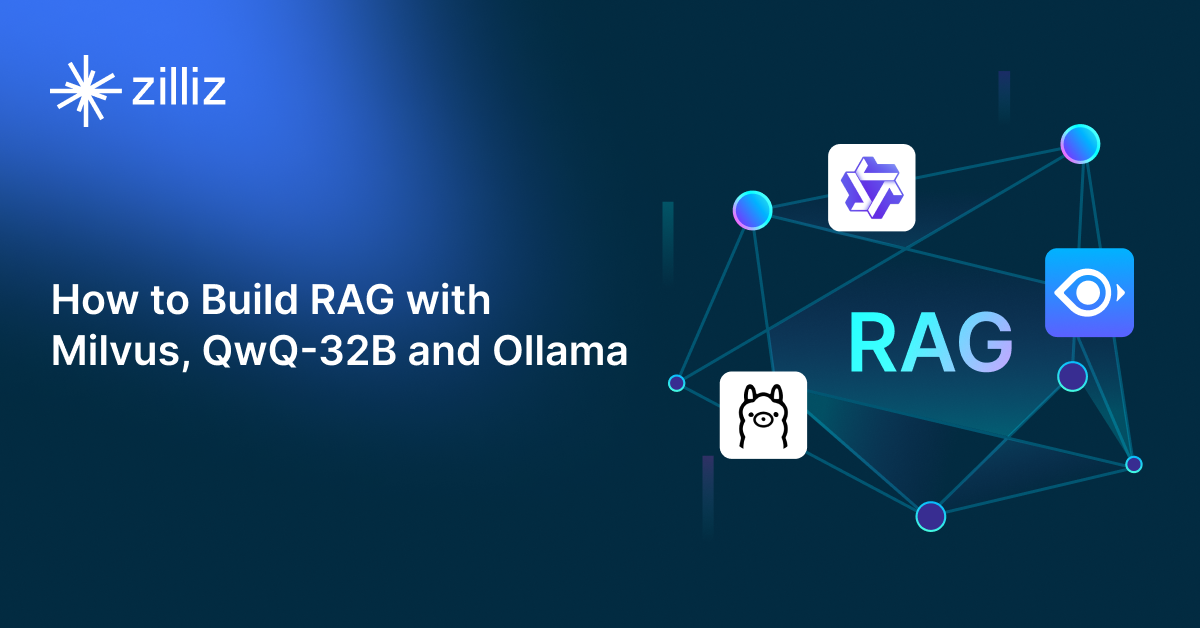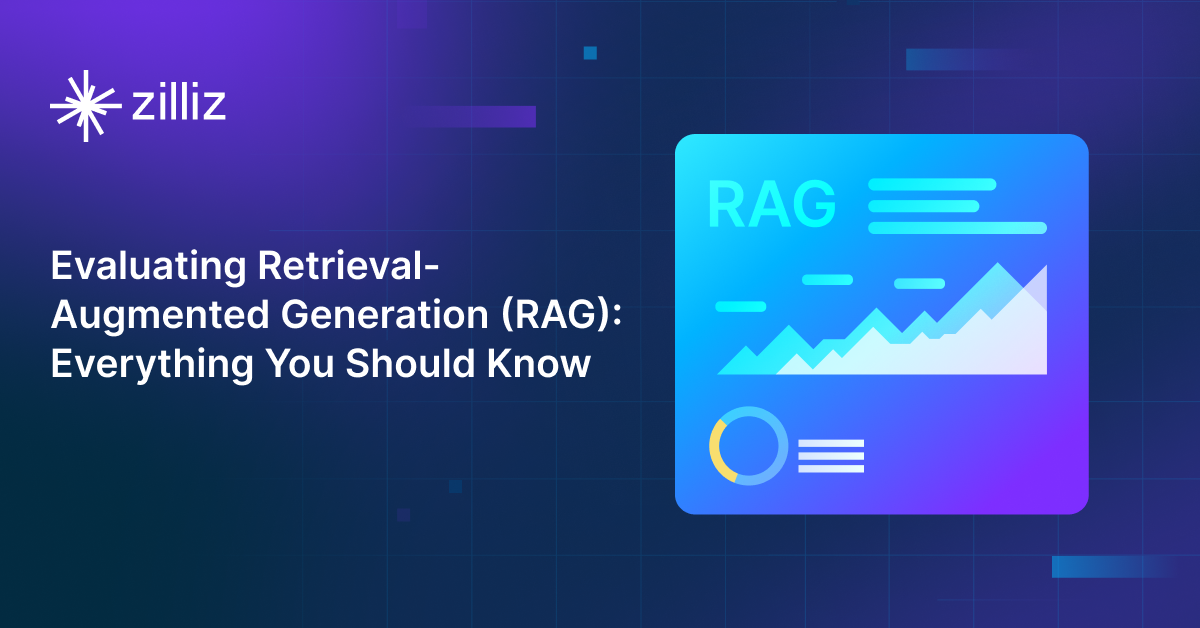Build RAG Chatbot with LangChain, LangChain vector store, Google Vertex AI Gemini 1.5 Flash, and Cohere embed-multilingual-v2.0
Introduction to RAG
Retrieval-Augmented Generation (RAG) is a game-changer for GenAI applications, especially in conversational AI. It combines the power of pre-trained large language models (LLMs) like OpenAI’s GPT with external knowledge sources stored in vector databases such as Milvus and Zilliz Cloud, allowing for more accurate, contextually relevant, and up-to-date response generation. A RAG pipeline usually consists of four basic components: a vector database, an embedding model, an LLM, and a framework.
Key Components We'll Use for This RAG Chatbot
This tutorial shows you how to build a simple RAG chatbot in Python using the following components:
- LangChain: An open-source framework that helps you orchestrate the interaction between LLMs, vector stores, embedding models, etc, making it easier to integrate a RAG pipeline.
- LangChain in-memory vector store: an in-memory, ephemeral vector store that stores embeddings in-memory and does an exact, linear search for the most similar embeddings. The default similarity metric is cosine similarity, but can be changed to any of the similarity metrics supported by ml-distance. It is intended for demos and does not yet support ids or deletion. (If you want a much more scalable solution for your apps or even enterprise projects, we recommend using Zilliz Cloud, which is a fully managed vector database service built on the open-source Milvusand offers a free tier supporting up to 1 million vectors.)
- Google Vertex AI Gemini 1.5 Flash: An advanced AI model designed for real-time applications, Gemini 1.5 Flash is optimized for speed and responsiveness in predictive analytics and NLP tasks. Its strengths lie in generating insights rapidly while ensuring accuracy, making it ideal for use cases in customer service automation and dynamic content generation.
- Cohere embed-multilingual-v2.0: This model specializes in generating high-quality multilingual embeddings, enabling effective cross-lingual understanding and retrieval. Its strengths lie in capturing semantic relationships in diverse languages, making it suitable for applications such as multilingual search, recommendation systems, and global content analysis where language diversity is a critical factor.
By the end of this tutorial, you’ll have a functional chatbot capable of answering questions based on a custom knowledge base.
Note: Since we may use proprietary models in our tutorials, make sure you have the required API key beforehand.
Step 1: Install and Set Up LangChain
%pip install --quiet --upgrade langchain-text-splitters langchain-community langgraph
Step 2: Install and Set Up Google Vertex AI Gemini 1.5 Flash
pip install -qU "langchain[google-vertexai]"
# Ensure your VertexAI credentials are configured
from langchain.chat_models import init_chat_model
llm = init_chat_model("gemini-1.5-flash", model_provider="google_vertexai")
Step 3: Install and Set Up Cohere embed-multilingual-v2.0
pip install -qU langchain-cohere
import getpass
import os
if not os.environ.get("COHERE_API_KEY"):
os.environ["COHERE_API_KEY"] = getpass.getpass("Enter API key for Cohere: ")
from langchain_cohere import CohereEmbeddings
embeddings = CohereEmbeddings(model="embed-multilingual-v2.0")
Step 4: Install and Set Up LangChain vector store
pip install -qU langchain-core
from langchain_core.vectorstores import InMemoryVectorStore
vector_store = InMemoryVectorStore(embeddings)
Step 5: Build a RAG Chatbot
Now that you’ve set up all components, let’s start to build a simple chatbot. We’ll use the Milvus introduction doc as a private knowledge base. You can replace it with your own dataset to customize your RAG chatbot.
import bs4
from langchain import hub
from langchain_community.document_loaders import WebBaseLoader
from langchain_core.documents import Document
from langchain_text_splitters import RecursiveCharacterTextSplitter
from langgraph.graph import START, StateGraph
from typing_extensions import List, TypedDict
# Load and chunk contents of the blog
loader = WebBaseLoader(
web_paths=("https://milvus.io/docs/overview.md",),
bs_kwargs=dict(
parse_only=bs4.SoupStrainer(
class_=("doc-style doc-post-content")
)
),
)
docs = loader.load()
text_splitter = RecursiveCharacterTextSplitter(chunk_size=1000, chunk_overlap=200)
all_splits = text_splitter.split_documents(docs)
# Index chunks
_ = vector_store.add_documents(documents=all_splits)
# Define prompt for question-answering
prompt = hub.pull("rlm/rag-prompt")
# Define state for application
class State(TypedDict):
question: str
context: List[Document]
answer: str
# Define application steps
def retrieve(state: State):
retrieved_docs = vector_store.similarity_search(state["question"])
return {"context": retrieved_docs}
def generate(state: State):
docs_content = "\n\n".join(doc.page_content for doc in state["context"])
messages = prompt.invoke({"question": state["question"], "context": docs_content})
response = llm.invoke(messages)
return {"answer": response.content}
# Compile application and test
graph_builder = StateGraph(State).add_sequence([retrieve, generate])
graph_builder.add_edge(START, "retrieve")
graph = graph_builder.compile()
Test the Chatbot
Yeah! You've built your own chatbot. Let's ask the chatbot a question.
response = graph.invoke({"question": "What data types does Milvus support?"})
print(response["answer"])
Example Output
Milvus supports various data types including sparse vectors, binary vectors, JSON, and arrays. Additionally, it handles common numerical and character types, making it versatile for different data modeling needs. This allows users to manage unstructured or multi-modal data efficiently.
Optimization Tips
As you build your RAG system, optimization is key to ensuring peak performance and efficiency. While setting up the components is an essential first step, fine-tuning each one will help you create a solution that works even better and scales seamlessly. In this section, we’ll share some practical tips for optimizing all these components, giving you the edge to build smarter, faster, and more responsive RAG applications.
LangChain optimization tips
To optimize LangChain, focus on minimizing redundant operations in your workflow by structuring your chains and agents efficiently. Use caching to avoid repeated computations, speeding up your system, and experiment with modular design to ensure that components like models or databases can be easily swapped out. This will provide both flexibility and efficiency, allowing you to quickly scale your system without unnecessary delays or complications.
LangChain in-memory vector store optimization tips
LangChain in-memory vector store is just an ephemeral vector store that stores embeddings in-memory and does an exact, linear search for the most similar embeddings. It has very limited features and is only intended for demos. If you plan to build a functional or even production-level solution, we recommend using Zilliz Cloud, which is a fully managed vector database service built on the open-source Milvus and offers a free tier supporting up to 1 million vectors.)
Google Vertex AI Gemini 1.5 Flash optimization tips
Gemini 1.5 Flash is optimized for low-latency inference, making it ideal for real-time RAG applications. Improve efficiency by filtering out low-relevance documents before retrieval, ensuring optimal token usage. Use structured prompts with clear formatting to enhance response clarity. Keep temperature between 0.1 and 0.2 for accuracy, fine-tuning top-p as needed. Leverage Google’s AI infrastructure for dynamic scaling to handle fluctuating workloads. Implement caching for common queries to reduce redundant processing. In a multi-model deployment, use Gemini 1.5 Flash for fast responses while reserving Pro models for deeper reasoning.
Cohere embed-multilingual-v2.0 optimization tips
Cohere embed-multilingual-v2.0 supports a variety of languages, making it ideal for cross-lingual RAG setups. To optimize efficiency, preprocess text to remove language-specific noise and handle encoding issues, ensuring clean input for embedding generation. Implement efficient ANN algorithms, like FAISS with hierarchical indexing, to support fast retrieval across multilingual datasets. Compress embeddings using techniques such as product quantization or HNSW to optimize storage and speed. Use language detection models to route queries to the appropriate language-specific embeddings, minimizing unnecessary computation. Batch embedding operations and take advantage of parallel processing to handle large amounts of multilingual data efficiently. Regularly update embeddings to ensure the model reflects any language shifts or evolving trends.
By implementing these tips across your components, you'll be able to enhance the performance and functionality of your RAG system, ensuring it’s optimized for both speed and accuracy. Keep testing, iterating, and refining your setup to stay ahead in the ever-evolving world of AI development.
RAG Cost Calculator: A Free Tool to Calculate Your Cost in Seconds
Estimating the cost of a Retrieval-Augmented Generation (RAG) pipeline involves analyzing expenses across vector storage, compute resources, and API usage. Key cost drivers include vector database queries, embedding generation, and LLM inference.
RAG Cost Calculator is a free tool that quickly estimates the cost of building a RAG pipeline, including chunking, embedding, vector storage/search, and LLM generation. It also helps you identify cost-saving opportunities and achieve up to 10x cost reduction on vector databases with the serverless option.
 Calculate your RAG cost
Calculate your RAG cost
What Have You Learned?
What have you learned? Throughout this tutorial, we've embarked on an exciting journey into building a state-of-the-art Retrieval-Augmented Generation (RAG) system by seamlessly integrating four powerful components: a robust framework, a sophisticated vector database, a dynamic LLM, and a rich embedding model. You've seen how the framework, like a conductor of a grand orchestra, harmoniously ties these elements together, creating an efficient structure for your application. The vector database is the secret sauce that enables lightning-fast searches, ensuring your system retrieves relevant information in no time. Meanwhile, the conversational intelligence of the LLM adds a dynamic layer to your interactions, making your application not just informative but engaging and responsive. The embedding model enriches this experience by generating deep semantic representations, allowing your system to understand context and meaning at a nuanced level.
Throughout this journey, you’ve also picked up some valuable optimization tips to enhance your RAG system further. And if you haven’t already, make sure to leverage the free cost calculator to set realistic budgets while you innovate. Now that you have this foundation, I can’t wait to see how you will take these insights and start building, optimizing, and pushing the limits of what’s possible with your own RAG applications. So get started, explore, and unleash your creativity—the possibilities are endless!
Further Resources
🌟 In addition to this RAG tutorial, unleash your full potential with these incredible resources to level up your RAG skills.
- How to Build a Multimodal RAG | Documentation
- How to Enhance the Performance of Your RAG Pipeline
- Graph RAG with Milvus | Documentation
- How to Evaluate RAG Applications - Zilliz Learn
- Generative AI Resource Hub | Zilliz
We'd Love to Hear What You Think!
We’d love to hear your thoughts! 🌟 Leave your questions or comments below or join our vibrant Milvus Discord community to share your experiences, ask questions, or connect with thousands of AI enthusiasts. Your journey matters to us!
If you like this tutorial, show your support by giving our Milvus GitHub repo a star ⭐—it means the world to us and inspires us to keep creating! 💖
- Introduction to RAG
- Key Components We'll Use for This RAG Chatbot
- Step 1: Install and Set Up LangChain
- Step 2: Install and Set Up Google Vertex AI Gemini 1.5 Flash
- Step 3: Install and Set Up Cohere embed-multilingual-v2.0
- Step 4: Install and Set Up LangChain vector store
- Step 5: Build a RAG Chatbot
- Optimization Tips
- RAG Cost Calculator: A Free Tool to Calculate Your Cost in Seconds
- What Have You Learned?
- Further Resources
- We'd Love to Hear What You Think!
Content
Vector Database at Scale
Zilliz Cloud is a fully-managed vector database built for scale, perfect for your RAG apps.
Try Zilliz Cloud for Free


